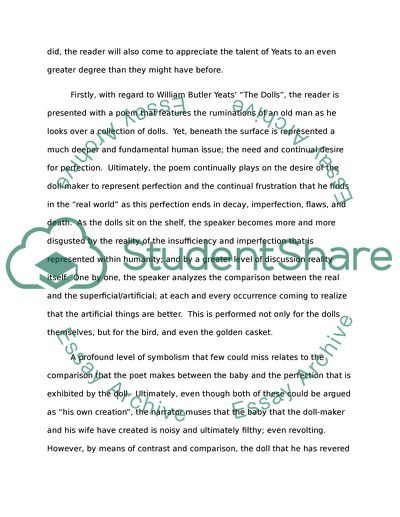Cite this document
(Symbolism and Yeats: An Analysis of Two Poems - The Dolls and A Coat Research Paper, n.d.)
Symbolism and Yeats: An Analysis of Two Poems - The Dolls and A Coat Research Paper. Retrieved from https://studentshare.org/literature/1826693-analytical-paper-about-william-butler-yeats
Symbolism and Yeats: An Analysis of Two Poems - The Dolls and A Coat Research Paper. Retrieved from https://studentshare.org/literature/1826693-analytical-paper-about-william-butler-yeats
(Symbolism and Yeats: An Analysis of Two Poems - The Dolls and A Coat Research Paper)
Symbolism and Yeats: An Analysis of Two Poems - The Dolls and A Coat Research Paper. https://studentshare.org/literature/1826693-analytical-paper-about-william-butler-yeats.
Symbolism and Yeats: An Analysis of Two Poems - The Dolls and A Coat Research Paper. https://studentshare.org/literature/1826693-analytical-paper-about-william-butler-yeats.
“Symbolism and Yeats: An Analysis of Two Poems - The Dolls and A Coat Research Paper”, n.d. https://studentshare.org/literature/1826693-analytical-paper-about-william-butler-yeats.


